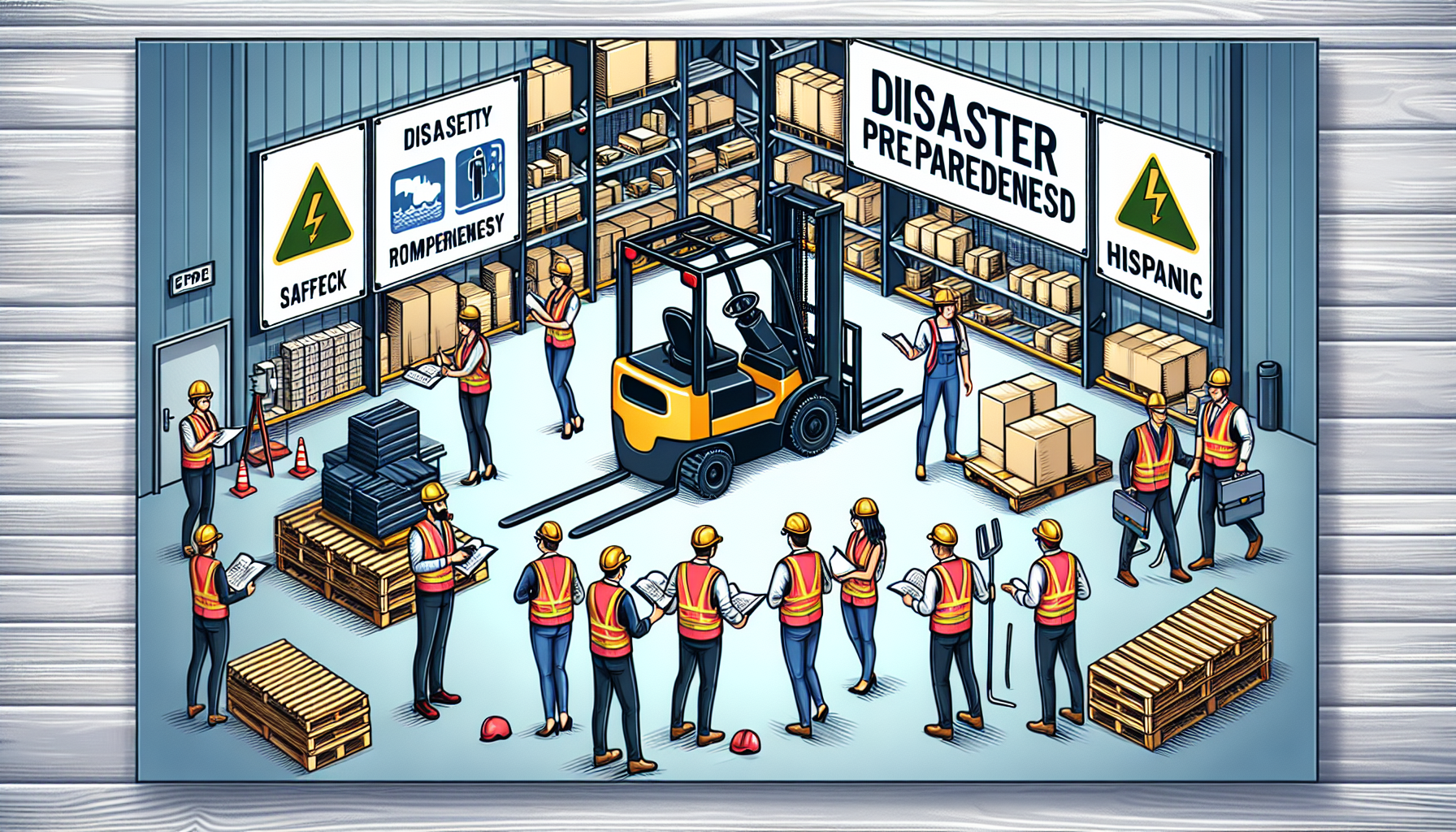Forklifts are an essential piece of equipment in warehouse operations, as they play a crucial role in material handling and movement. However, their power and functionality also bring significant risks if not operated safely. Forklift safety should be a top priority for any organization, not only to protect workers but also to ensure smooth operations and mitigate the risks associated with potential disasters.
The Importance of Forklift Safety
Forklift accidents can have severe consequences, including injuries, fatalities, property damage, and operational disruptions. By prioritizing and implementing forklift safety measures, companies can significantly reduce the likelihood of accidents and their associated risks. Here are some key reasons why forklift safety is essential for disaster preparedness:
- Worker Safety: The safety and well-being of warehouse employees should always be a top concern for employers. Forklift accidents can cause serious injuries, such as crushing incidents, falls, and collisions. By enforcing strict safety protocols, providing proper training, and maintaining forklifts in good working condition, companies can create a safer working environment for employees.
- Operational Continuity: Forklift accidents can disrupt warehouse operations, leading to delays, lost productivity, and increased costs. By implementing comprehensive forklift safety measures, organizations can minimize the risk of accidents, ensuring smooth and uninterrupted operations even during a disaster or emergency situation.
- Preventing Property Damage: Forklift accidents can result in significant property damage, including damage to inventory, storage racks, and the facility itself. By promoting forklift safety practices, companies can reduce the risk of accidents and minimize potential damage, protecting their assets and avoiding costly repairs or replacements.
- Insurance and Liability: Forklift accidents can lead to legal and financial repercussions for organizations. Proper forklift safety measures demonstrate a commitment to workplace safety, which can positively impact insurance coverage and premiums. Furthermore, by minimizing the risk of accidents, employers can avoid potential lawsuits and liability claims associated with injuries or property damage caused by forklift incidents.
- Emergency Preparedness: Disasters, whether natural or man-made, can strike at any time. Having a comprehensive forklift safety plan in place as part of the overall disaster preparedness strategy is essential. This includes training employees on emergency procedures, establishing evacuation routes, and ensuring that forklift operators know how to operate the equipment safely in different scenarios, such as power outages or severe weather conditions.
Warehouse safety evaluation is a critical step in assessing the effectiveness of forklift safety measures and identifying areas for improvement. Regular safety evaluations can help organizations identify potential hazards, evaluate the adequacy of safety protocols, and ensure compliance with applicable safety regulations.
Here are a few key tips to enhance forklift safety in the warehouse:
- Training and Certification: Ensure that all forklift operators are properly trained and certified to operate the equipment. Ongoing training and refresher courses can help reinforce safe operating practices.
- Maintenance and Inspections: Regularly inspect and maintain forklifts to identify and address any mechanical issues that may compromise safety. Implement a preventive maintenance schedule to keep the equipment in optimal condition.
- Clear Pathways: Designate clear pathways and traffic patterns for forklifts to minimize the risk of collisions with pedestrians or other equipment. Use floor markings, barriers, and signage to clearly indicate the designated forklift routes.
- Load Capacity: Ensure that the forklift operators understand the load capacity limitations of the equipment and adhere to them strictly. Overloading a forklift can adversely affect stability and increase the risk of accidents.
- Safety Equipment: Provide appropriate safety equipment, such as seat belts, safety lights, and audible alarms, on all forklifts. Encourage operators to use these safety features consistently.
- Communication: Establish clear communication protocols between forklift operators and other employees in the warehouse. Use radios, hand signals, or designated communication devices to ensure effective communication and coordination.
By prioritizing forklift safety and integrating it into the overall disaster preparedness plan, organizations can significantly reduce the risk of accidents, protect their employees and assets, maintain operational continuity, and mitigate potential legal and financial repercussions. Implementing comprehensive forklift safety measures is not only a legal obligation but also a responsible business practice that contributes to a safer and more productive work environment.
For expert guidance on improving warehouse safety and optimizing operations, consider reaching out to HCO Innovations’ warehouse optimization solutions. They are a leading provider of warehouse optimization services based in Raleigh, NC, specializing in enhancing safety, productivity, and efficiency within warehouse operations.

